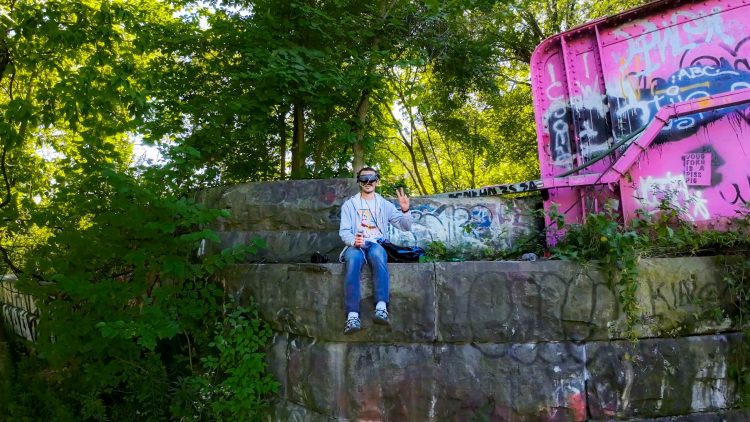The DJI Avata is possibly the most fun I’ve had flying a drone, but its high price tag and steep learning curve make me wonder how big the FPV drone market will ever become.
DJI has attempted to lessen this learning curve with its ‘Motion controller’ that came out with the first (and much larger) DJI FPV drone last year. I’ve been using this new controller all week, and while it’s insanely intuitive, I’m not sure if it’s truly the right tool to use to control a flying camera.
Beyond that, the company has released a newer and smaller pair of FPV goggles with HD display capabilities, a touch panel and adjustable prescription lenses that are pretty amazing. There truly is a lot to love about the Avata drone system, but you need to ask yourself a few questions before you decide to pick this up over a Mini 3 Pro.
What to know before you buy
The Avata is known as a ‘Cinewoop’ drone since it’s small, safe and fast. These drones accomplish crazy shots of flying straight down, flips, and other jaw-dropping camera techniques. If you’ve ever seen an Instagram video of a drone flying through tiny gaps in trees or indoors, it’s likely one of these types.
The inclusion of propeller guards makes them both safer and more rigid compared to something light and minimal like the DJI Mini 3 Pro. I even crashed mine into a tiny pole that I didn’t see in the goggles at full speed, and the drone shook it off after I retrieved it from a nearby tree. DJI also designed the Avata to shut off quickly after it impacts something with enough force so it ideally won’t go crazy and spiral out of control, causing more harm or damage. This is a great safety feature, but also something to keep in mind as you try more intense stunts high in the air or over water.
But don’t let its relative safety and small size fool you. This drone weighs almost twice as much as the Mini 3 Pro, which means you need a level one drone license to operate it.
The battery I should mention is rated to last 18 minutes, but I found myself getting closer to 10-14 minute range of actual flight time before the drone started warning me that my battery was dying and that it was going to start returning home.
It’s also worth noting that the types of shots you can get with this drone are much different than you’d expect from a Mavic or Mini. However, the camera is about on par with the latest Mini 3 Pro in my brief tests. Although, it doesn’t seem to handle low light or high-dynamic-range scenes as expertly as the Mini.
A tale of two controllers… kind of
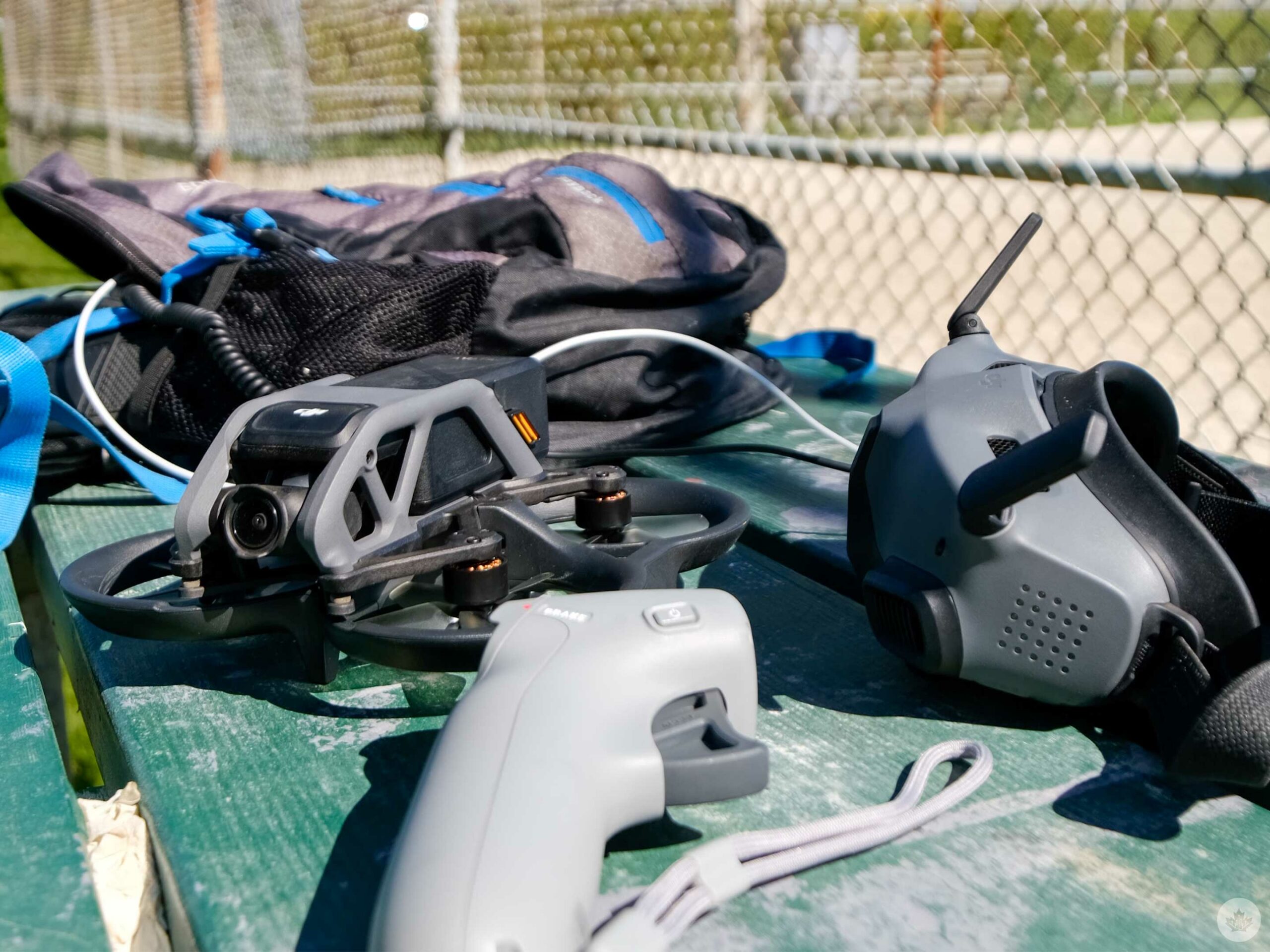
While there’s no denying that DJI has built an extremely powerful FPV filmmaking kit with the Avata, the way the company sells the drone is a bit of a hustle.
There are three bundles. One that’s drone-only ($819 CAD), another with the old DJI goggles, the Avata and a Motion Controller ($1,519). The final bundle comes with the newer DJI headset, the Avata and the Motion Controller ($1,809).
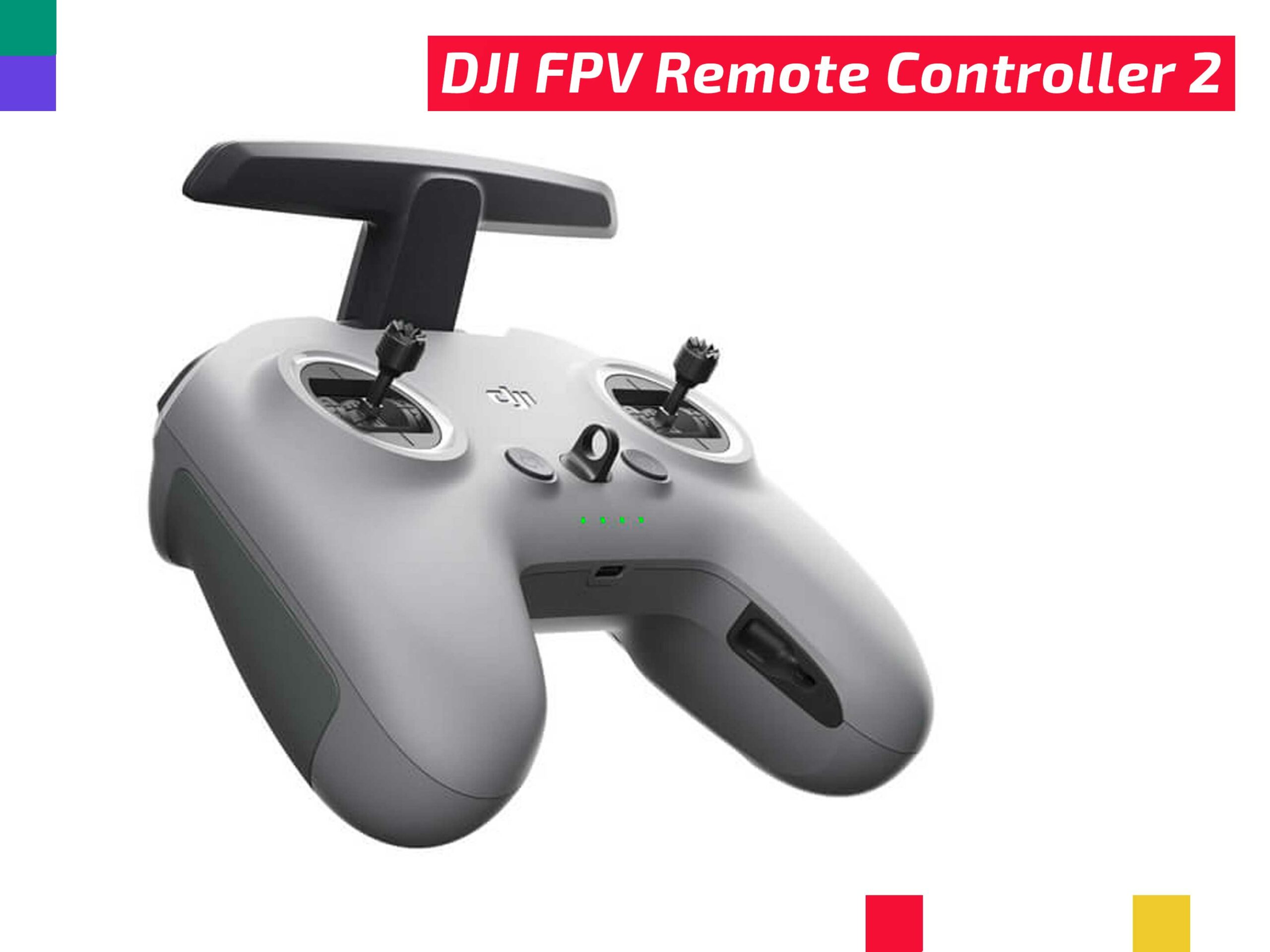
The only way to get the actual gamepad-inspired remote is to buy it separately for $260. This remote allows for full manual drone control so you can accomplish steep dives, flips and more daredevil moves.
At first glance, this makes sense since the motion controller works better for beginners. However, if you spend between $1,500 and $1,800 on this drone, do you plan on being a beginner for long? I’ve flown this drone three times so far and I’m already aching to try out some more complex moves that I’ve seen FPV enthusiasts sharing on Instagram.
That’s not to say that the motion controller is bad. I was a bit skeptical of it at first, but it’s more responsive than I ever imagined and holding it between your legs like a real flight stick as you fly just makes so much sense, even if it does look a bit awkward when you’re sitting alone in a park with a VR headset on and your hand between your legs…
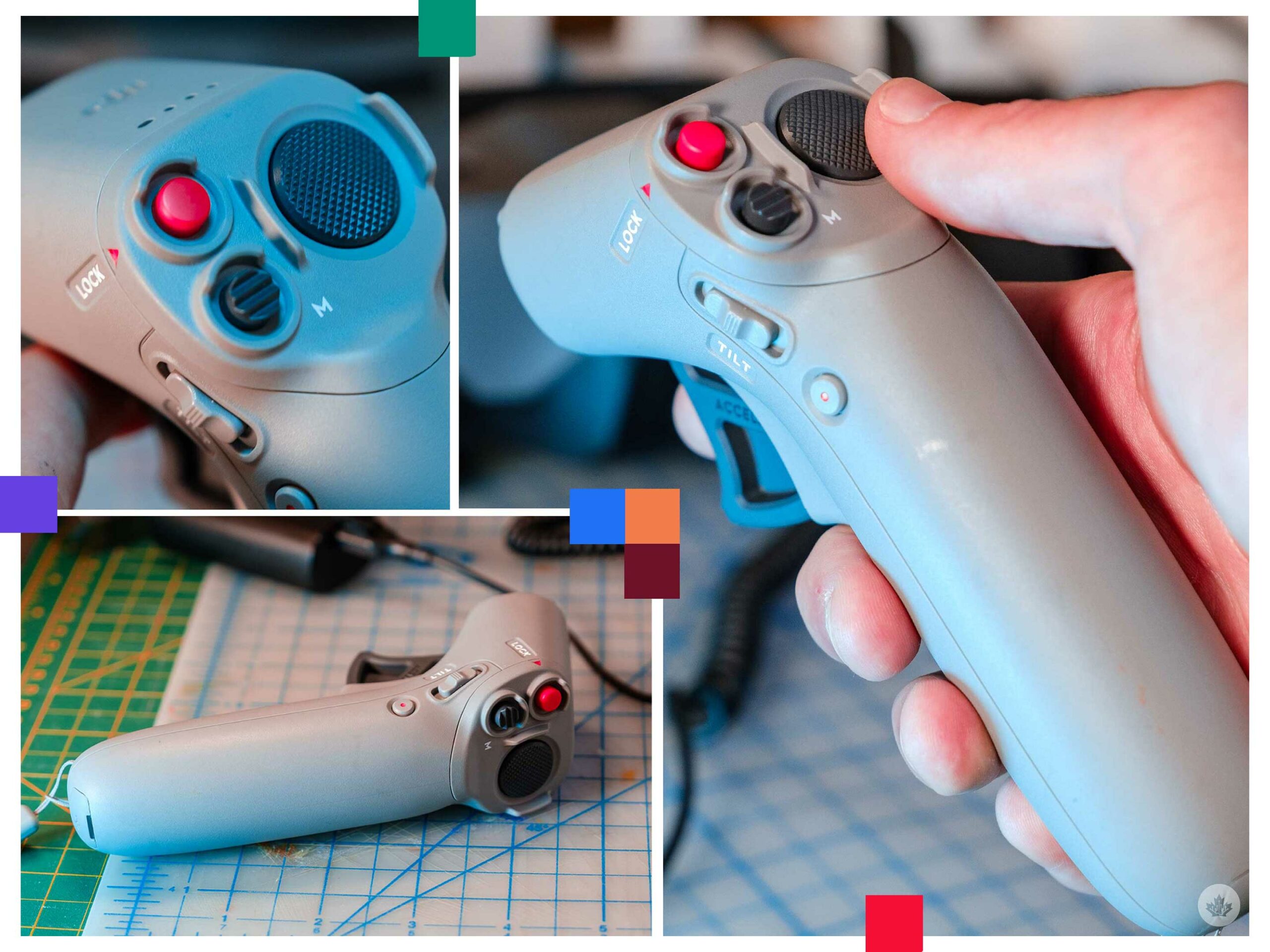
With the DJI Motion Controller, you need to fly in Sport or Normal, enabling safety features. You can still do some pretty epic flights with the Motion Controller, but if you want to push boundaries, I could see most people upgrading to the standard controller within a few months or even weeks of owning the Avata. That’s what makes the pricing a bit of a hustle. Since there’s no bundle with the drone, goggles and standard controller, most people looking at this drone will likely want to factor that into the price.
It’s also worth noting that since you only get about 10-15 minutes of flight time, extra batteries are a must, and the DJI Fly More combo with two extra cells and a larger charger costs $285 CAD.
A versatile drone and a smart ecosystem
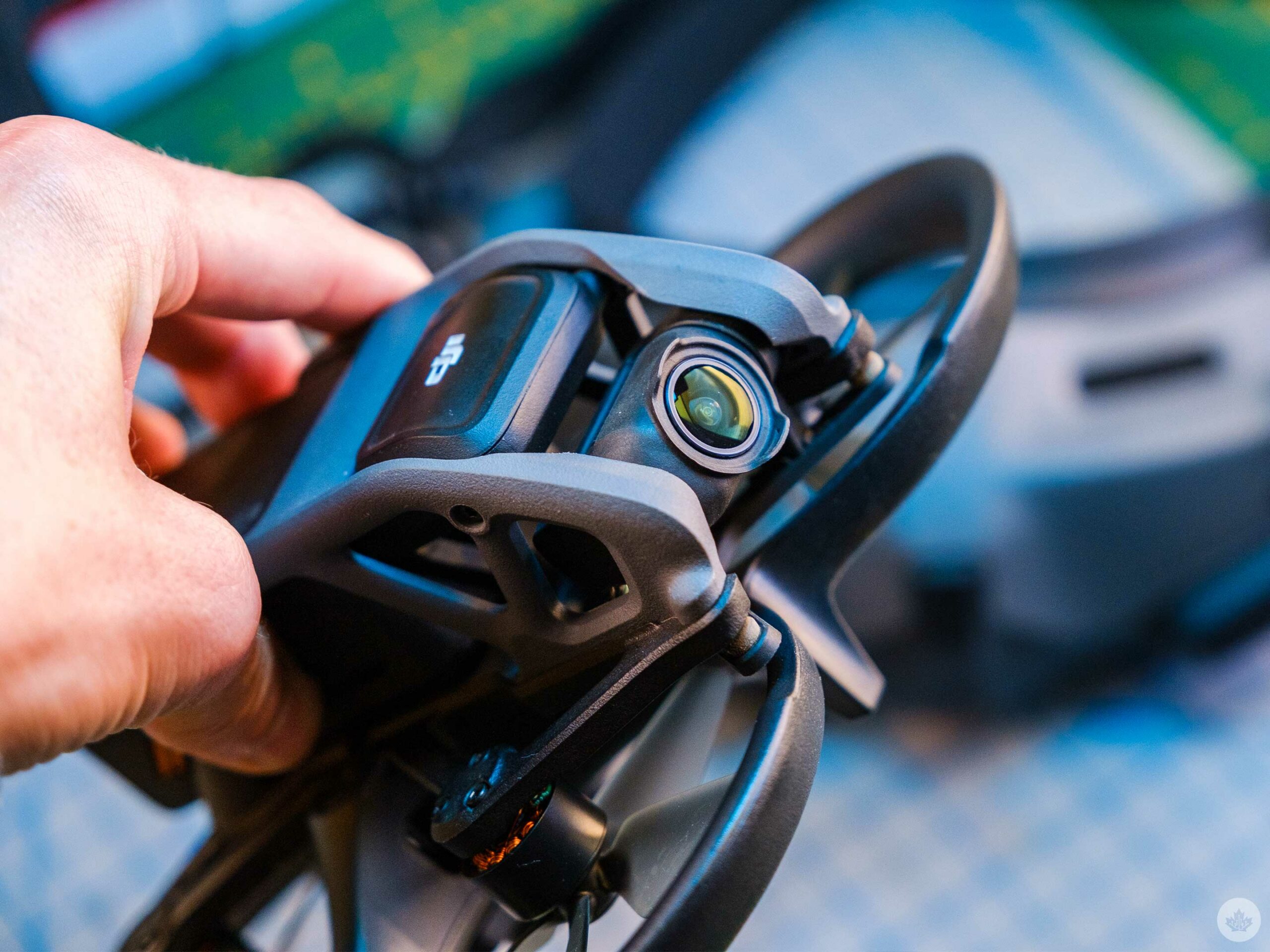
Regardless, when you stack up the Avata and the new DJI FPV Goggle up against most of the homemade Cinewoop drones, DJI’s image transmission system, build quality and battery life are hard to beat.
When you have the headset on you, see lots of information regarding your speed, height, connection status, gridlines, levels, and more. Plus, you can change all your camera settings easily on the fly with the touchpad on the side of the headset. You can also wire it to a phone, or a tablet and spectators can watch and help direct your shots.
For photography and cinematic videography, something like the Mini 3 Pro still gets all the shots I need. Plus, active track features and solid HDR are more important to me. On the other side, I know my partner Alex is really into the FPV aspect of the drone and has more cinematic ambition for the incredible action that it allows for. All of this is to say that you’ll need to weigh out what you’re looking for before you buy either of these two drones.
You can buy the DJI Avata from DJI for $1,809 CAD with Goggle V2 and the motion controller.
Source by mobilesyrup.com






















